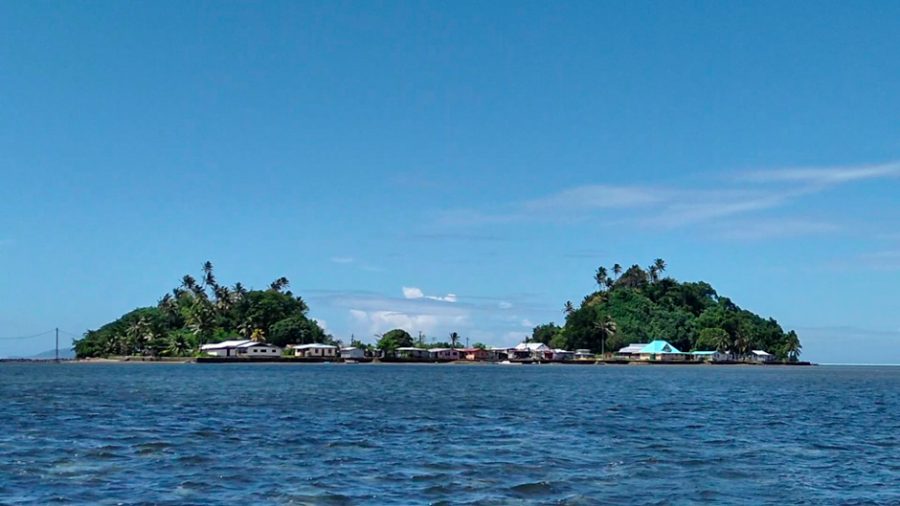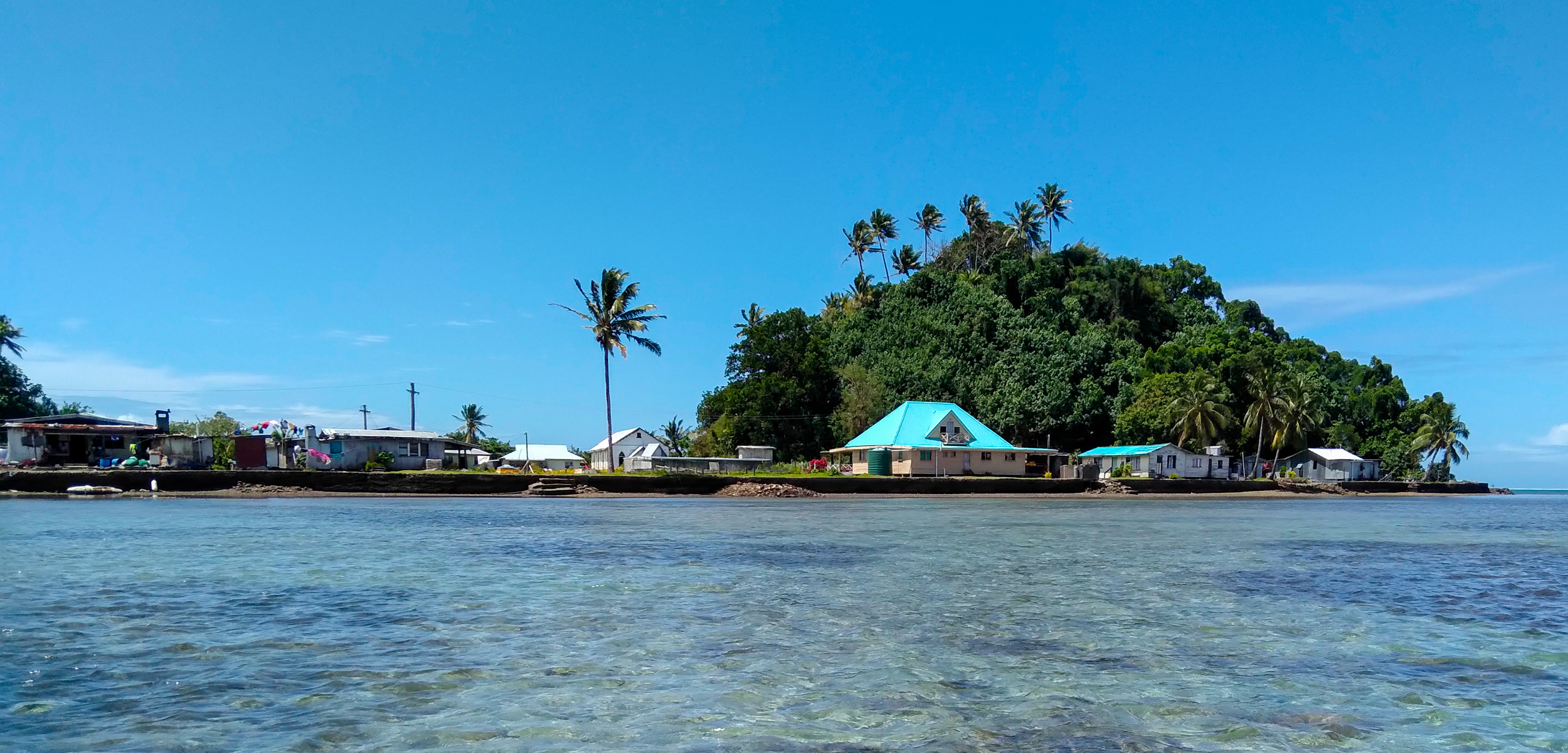Managed Retreat? Please, Not Yet
As climate impacts grow, an Indigenous Fijian community weighs what it means to leave.
Article body copy
Salt water is already seeping through gardens, under homes, and among the headstones on Serua Island, Fiji. As climate change rolls on, and as the sea level continues to rise, this low-lying island off the southern coast of Viti Levu, one of the country’s two largest islands, seems like an obvious candidate for relocation efforts—and its inhabitants the latest face of climate refugees. Fiji’s national government has offered its support to help the island’s 100 or so inhabitants move. Yet almost all are choosing to stay put.
The islanders’ unexpected stance paints a compelling picture of a phenomenon researchers are calling voluntary immobility. Their story complicates the common assumption that people want to move in the face of increasing risk and will do so if they can.
“When we talk about climate impacts and relocation, there’s usually this focus on the people who are moving,” says Merewalesi Yee, an Indigenous Fijian and doctoral candidate at Australia’s University of Queensland and lead author of a 2022 paper on the topic. “But there are plenty of people who wish not to move—and they’re almost always overlooked.”
Relocating an entire village is a mess of logistical, legal, and economic considerations. But relocating a community can also have deep social implications. For many Indigenous communities, that’s especially fraught. “For Pacific Islanders,” says Yee, “relocation is not just packing your stuff and moving on to a different place and then it’s a new chapter, new life.”
For Fiji’s Indigenous iTaukei, the connection to ancestral land is a central relationship. Expressed through the concept of vanua—which translates literally as “land,” this deep bond encompasses the interconnectedness of the natural environment, kinship ties, ways of life, values, spirituality, and stewardship responsibilities. “Vanua binds local communities to their land,” writes Yee and her coauthors. “[It] is essential to one’s identity and existence as the core of one’s being and the essence of what it means to be an Indigenous Fijian.”
It is vanua, Yee found through a series of interviews and conversations, that is central to many Serua Islanders’ stated decision to stay put.
“When you have that connection to place, it makes you want to do anything to protect it,” she says. “So for the people of Serua, while the sea level rise, coastal erosion, and saltwater intrusion are already so evident, their sense of stewardship means they’re trying their best to maintain the island for as long as they can.”
The cultural connections run deep on Serua Island in particular. The island is the residence of the paramount chief of the much-larger Serua Province, which stretches over 830 square kilometers on southern Viti Levu. It’s also the site of the province’s chiefly graveyard. Abandoning it to rising water would be akin to letting Westminster Abbey drown, taking its long-buried kings and queens with it. In such an important place, customary obligations to sustain and act as guardians are especially strong. As one resident said during a discussion with Yee, “[o]ur forefathers chose to live and remain on the island just so they could be close to our chief.”

At low tide, Serua Island is within walking distance of the larger Viti Levu, one of Fiji’s main islands. Photo by Merewalesi Yee
Concerns about supernatural punishments also keep the iTaukei in place. “If we do not respect the vanua, our chief, the sea, ancestral home, sacred places, our relations, fauna, and flora,” said one villager, “it will result in difficulties, poverty, sickness, death, and bad weather. This is the fundamental belief that guides us in our daily life in the village.”
With so much cultural connection and responsibility bearing down, relocating is very much a last resort—one that risks disrupting or losing sacred sites, ways of life, and Indigenous knowledge. “Preserving the environment is something our ancestors have done for a long time,” said another villager. “It is true that they were not formally educated in schools. But their amazing knowledge could predict what would happen as a result of climate change and develop steps to strengthen, improve, and protect the vanua.”
For now, the community is using everything at its disposal to stay. The residents are building a new sea wall by hand and restoring mangrove forests to build up sediment and protect the island from storm surges. They’ve already moved their food gardens to Viti Levu, which they can walk to at low tide. They are well aware, however, that the disappearance of their home beneath the waves is likely inevitable.
“Believe me,” said another villager, “we know how strong and dangerous the waves have become to our lives and what [the ocean] has done and can still do to our beloved island.”
They are prepared to leave at such a point when they find life there unfeasible. Migration is not anathema to notions of vanua: after all, the community’s ancestors themselves moved to the island in the 19th century. But what Serua’s residents want is to decide when and how that happens.
For those concerned with climate adaptation, the Serua Islanders’ story shows the importance of working with local people on their own terms.
“Subsistence Indigenous societies in the Pacific are likely to have the best expertise in what makes their home livable and how challenges to habitability can be addressed,” says Carol Farbotko, a cultural geographer at Australia’s Griffith University who was not involved in the research. “If climate risk assessments and community perception are mismatched on the need for relocation, there needs to be more consultation done on local knowledge of habitability and greater attention to and financing of in-situ adaptation.”
Forcing people to relocate may keep their feet above water, but without careful attention to their priorities and values, Yee says, negative social impacts can be particularly profound. “You’re keeping [people] safe from impacts of the sea level rise, but then the vulnerability is still there in that cultural disconnection.”
If people are unwilling to relocate, Yee suggests they should be supported to remain wherever possible and given up-to-date information on the risks of both staying and relocating. “I think sometimes we [outsiders] can feel like, ah, but the danger is there,” Yee says. “But at the end of the day, it’s not us leaving—it’s them.”

